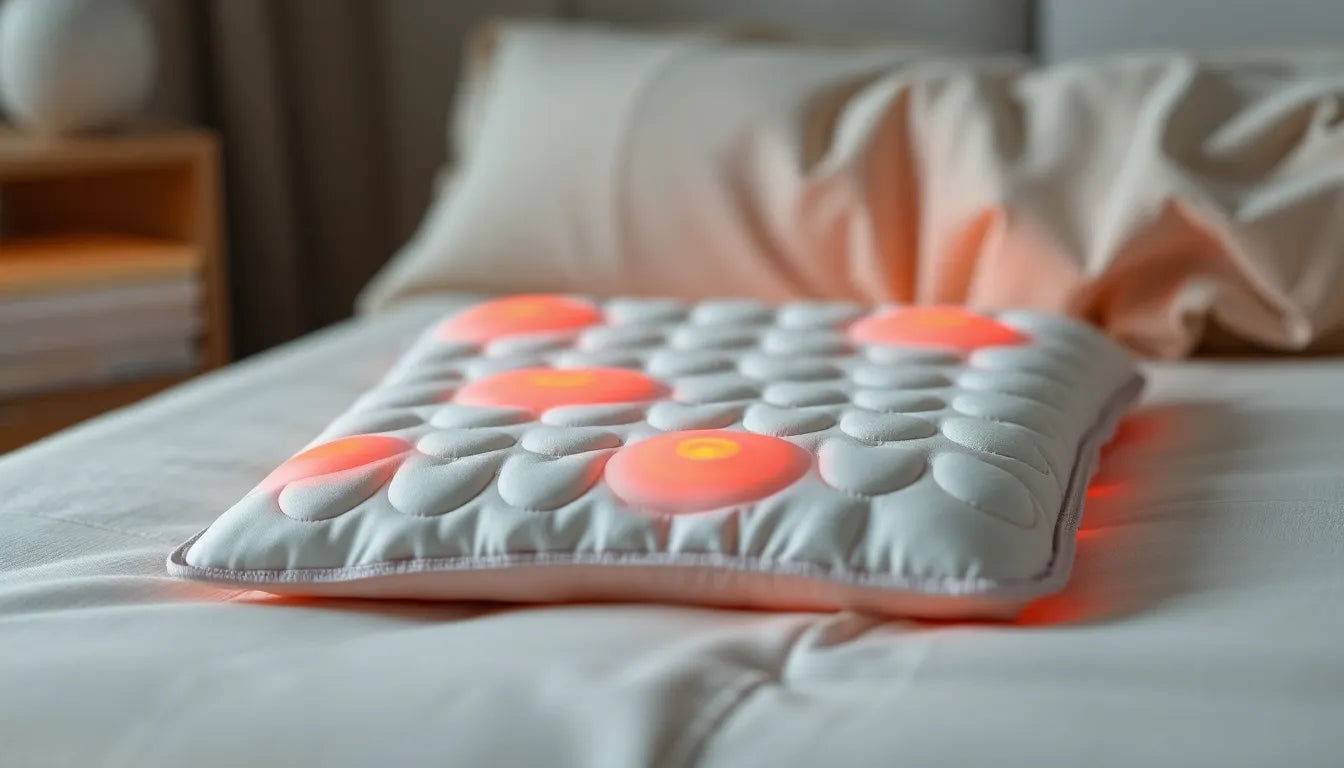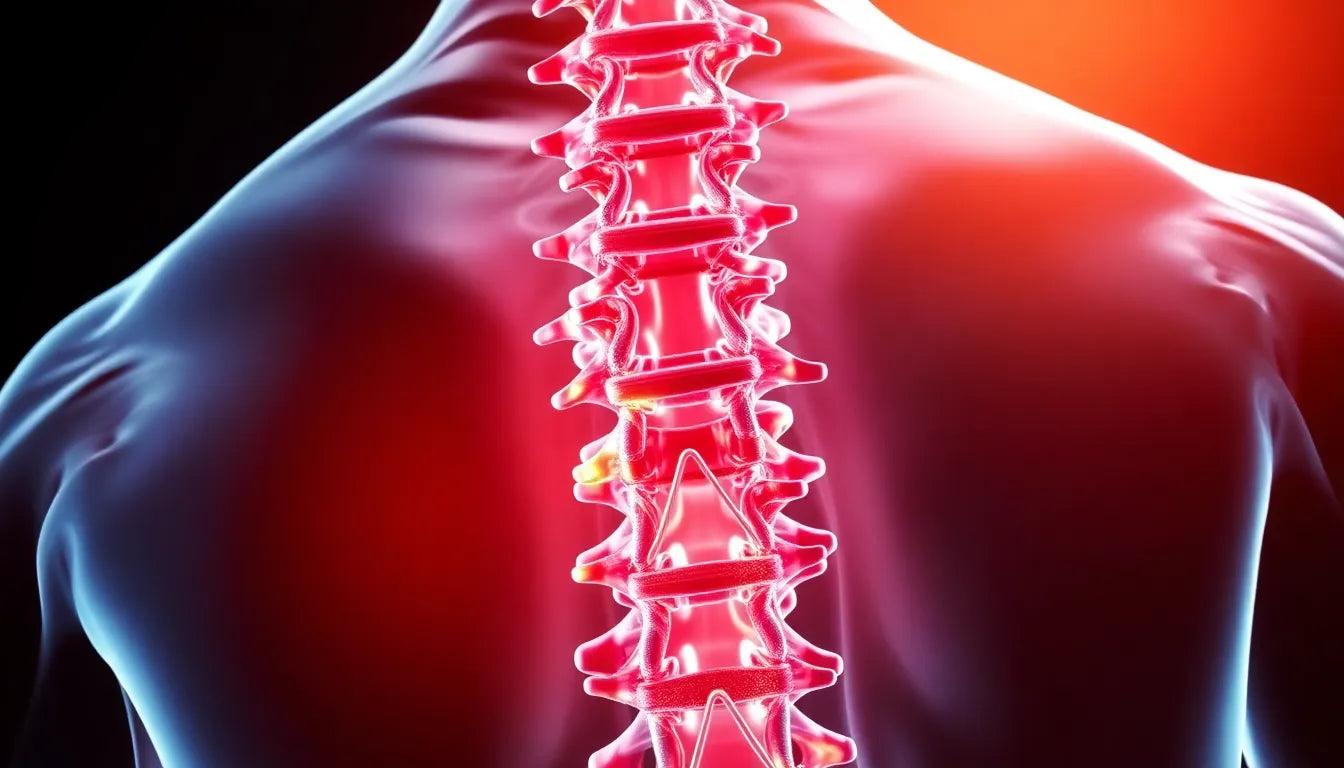Sciatica, a prevalent condition affecting millions worldwide, is characterized by pain that radiates along the sciatic nerve, which extends from the lower back down through the legs. This discomfort can range from mild to severe, often making everyday activities challenging. Managing sciatica pain effectively is crucial, as it can significantly impact one's quality of life. While there are various treatment options available, finding the right method for relief can be daunting.
heat therapy: a soothing solution
Among the myriad of treatments, heat therapy emerges as a popular and conservative choice for alleviating sciatica pain. By applying heat, individuals can experience increased blood flow, which helps relax tight muscles and improve tissue flexibility. This, in turn, reduces muscle spasms and provides much-needed relief. A sciatica heating pad is a practical tool in this therapeutic approach, offering targeted warmth to ease discomfort and promote healing.
exploring the potential of a heating pad
Imagine dealing with persistent sciatica pain that disrupts your daily routine. The constant ache and discomfort can be overwhelming, leaving you in search of a reliable solution. Could a heating pad be the answer to your woes? With its ability to deliver soothing warmth directly to the affected area, a heating pad might just be the key to unlocking comfort and relief. As we delve deeper into the benefits and applications of a sciatica heating pad, consider how this simple yet effective tool could transform your pain management strategy.
understanding the purpose and benefits of heat therapy
Heat therapy plays a pivotal role in managing sciatica by targeting the underlying causes of discomfort. When applied, heat increases blood circulation, which is essential for delivering oxygen and nutrients to the affected area. This enhanced blood flow helps relax tight muscles and improve tissue flexibility, crucial factors in reducing muscle spasms. By addressing these elements, heat therapy not only alleviates pain but also supports the healing process.
Applying heat specifically to the lower back is crucial since sciatica pain often originates from nerve compression in the lumbar spine. By focusing on this area, a sciatica heating pad can effectively mitigate the root cause of the pain, offering targeted relief that extends beyond temporary comfort.
optimal timing and application of a heating pad
For those suffering from sciatica, understanding when and how to use a heating pad is essential for effective pain management. Heat therapy is most beneficial after the acute inflammation phase, typically a few days following the onset of symptoms. During this period, the application of heat can promote muscle relaxation and facilitate recovery.
Experts recommend using a heating pad for 15–20 minutes at a time. For prolonged relief, longer durations at lower heat settings can be employed, ensuring that skin safety is maintained. It is crucial to avoid using heating pads while sleeping to prevent burns or skin irritation.
exploring different types of heating pads
Choosing the right type of heating pad can enhance the effectiveness of heat therapy. Electric heating pads are popular due to their consistent heat output, adjustable settings, and safety features like auto-shutoff timers. These pads provide reliable warmth and are suitable for home use.
Microwaveable pads, often filled with gel, rice, or flaxseed, offer the advantage of moist or dry heat. They are convenient for short-term relief and portability. Their ability to conform to the body makes them an excellent choice for targeted therapy.
Adhesive heat wraps are ideal for individuals seeking continuous heat during daily activities. These wraps offer portability and ease of use, though they may provide less control over temperature settings.
safety precautions to consider
While heating pads are generally safe, certain precautions should be observed to ensure optimal use. Avoid applying a heating pad immediately after using topical anti-inflammatories, as this can increase the risk of skin irritation or burns. Additionally, prolonged exposure to high heat should be avoided to prevent skin damage.
By adhering to these guidelines and selecting the appropriate type of heating pad, individuals can harness the full potential of heat therapy for sciatica relief. As we continue to explore the nuances of managing sciatica pain, understanding the strategic application of heat therapy remains a cornerstone in achieving comfort and recovery.
ice vs. heat: finding the right balance
When it comes to managing sciatica pain, there's an ongoing debate about the effectiveness of ice versus heat therapy. Each method has its place in a comprehensive pain management strategy, depending on the stage and nature of the pain. Ice is typically recommended during acute flare-ups to reduce inflammation and numb sharp pain. This approach helps control swelling, which can exacerbate nerve compression.
On the other hand, heat therapy, such as a sciatica heating pad, is more beneficial for chronic muscle tension and stiffness. It promotes increased blood flow, relaxes muscles, and enhances flexibility, making it ideal once the initial inflammation subsides. Some experts advocate for a combination approach known as contrast therapy, which involves alternating between heat and cold. This method can provide comprehensive relief by addressing both inflammation and muscle tension. When using contrast therapy, it is advisable to conclude with ice to minimize any residual swelling.
trending features in heating pads
The market for heating pads has evolved, with innovative features that cater to diverse needs and preferences. Ergonomic designs specifically tailored for the lumbar area are gaining popularity, as they align with medical advice to target the back rather than the legs. These products often come with built-in safety features, such as auto-shutoff timers and adjustable heat settings, ensuring both efficacy and safety.
Additionally, the trend of bundled products that offer both heating and cooling options is on the rise. Such products provide a comprehensive solution for sciatica management, allowing users to seamlessly transition between heat and cold therapies. This versatility is particularly appealing for individuals seeking a well-rounded approach to pain relief.
conclusion: embracing the power of a sciatica heating pad
In summary, a sciatica heating pad can be a valuable tool in managing sciatica pain. Its ability to deliver targeted warmth helps alleviate discomfort, promote healing, and enhance overall well-being. By understanding the appropriate timing and application of heat therapy, individuals can maximize the benefits while minimizing risks.
When selecting a heating pad, it is important to consider personal needs and preferences, taking into account factors such as design, safety features, and the option for combined therapy. By doing so, individuals can tailor their pain management strategy to achieve optimal relief and improve their quality of life.
Frequently Asked Questions
Can I use a heating pad during a sciatica flare-up?
It is generally recommended to use ice during an acute flare-up to reduce inflammation and switch to heat therapy after the initial swelling subsides.
How long should I use a heating pad for sciatica relief?
Use the heating pad for 15–20 minutes at a time, with the option for longer durations at lower heat levels, but avoid using it while sleeping to prevent skin damage.
What type of heating pad is best for sciatica?
Electric heating pads are favored for consistent heat and safety features, while microwaveable pads offer moist heat and portability. Adhesive wraps are great for on-the-go use.
Are there any risks associated with using a heating pad for sciatica?
Yes, prolonged use or excessive heat can cause burns or skin irritation. Avoid using heating pads immediately after applying topical anti-inflammatories.
Sources
- Spine-health. "How to Apply Heat Therapy for Your Sciatica Symptoms."
- HealthPartners Blog. "Sciatica Pain Relief and Treatment Options."
- Alliance PTP. "Heat vs. Ice for Sciatica: Which Is More Effective?"
- Spine-health. "Cold and Heat Therapy for Sciatica."
- Spine-health. "How to Use Heat Therapy for Leg Pain and Sciatica Pain Relief Video."
- CNET. "The 5 Best Heating Pads in 2025."
- YouTube. "Sciatica – Ice or Heat?" by Will Harlow.


















